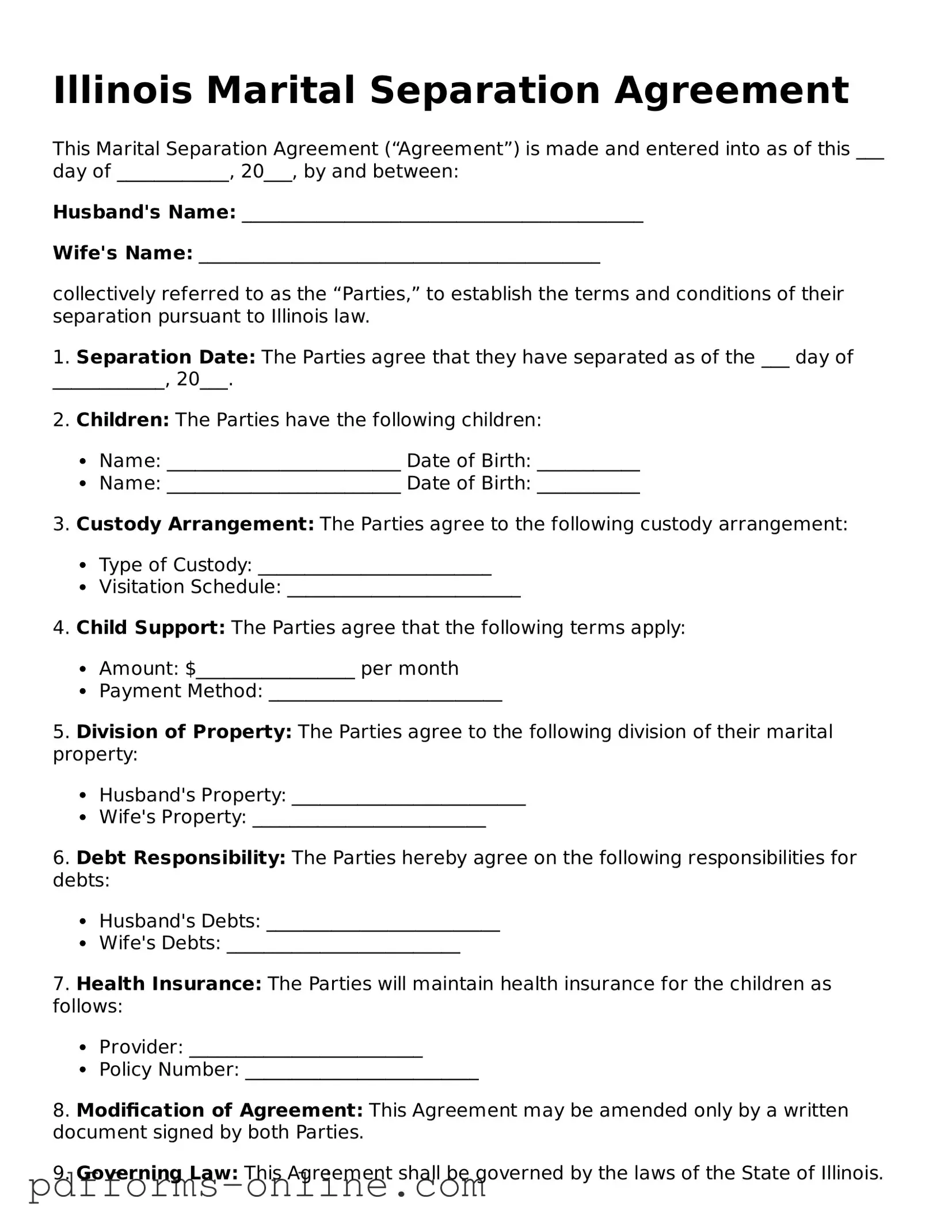Illinois Marital Separation Agreement
This Marital Separation Agreement (“Agreement”) is made and entered into as of this ___ day of ____________, 20___, by and between:
Husband's Name: ___________________________________________
Wife's Name: ___________________________________________
collectively referred to as the “Parties,” to establish the terms and conditions of their separation pursuant to Illinois law.
1. Separation Date: The Parties agree that they have separated as of the ___ day of ____________, 20___.
2. Children: The Parties have the following children:
- Name: _________________________ Date of Birth: ___________
- Name: _________________________ Date of Birth: ___________
3. Custody Arrangement: The Parties agree to the following custody arrangement:
- Type of Custody: _________________________
- Visitation Schedule: _________________________
4. Child Support: The Parties agree that the following terms apply:
- Amount: $_________________ per month
- Payment Method: _________________________
5. Division of Property: The Parties agree to the following division of their marital property:
- Husband's Property: _________________________
- Wife's Property: _________________________
6. Debt Responsibility: The Parties hereby agree on the following responsibilities for debts:
- Husband's Debts: _________________________
- Wife's Debts: _________________________
7. Health Insurance: The Parties will maintain health insurance for the children as follows:
- Provider: _________________________
- Policy Number: _________________________
8. Modification of Agreement: This Agreement may be amended only by a written document signed by both Parties.
9. Governing Law: This Agreement shall be governed by the laws of the State of Illinois.
IN WITNESS WHEREOF, the Parties have executed this Agreement as of the date first above written.
Husband's Signature: ________________________________ Date: _______________
Wife's Signature: ________________________________ Date: _______________
This Agreement does not constitute a final divorce decree. It is intended to outline the terms of separation and should be reviewed by legal counsel for enforceability.
